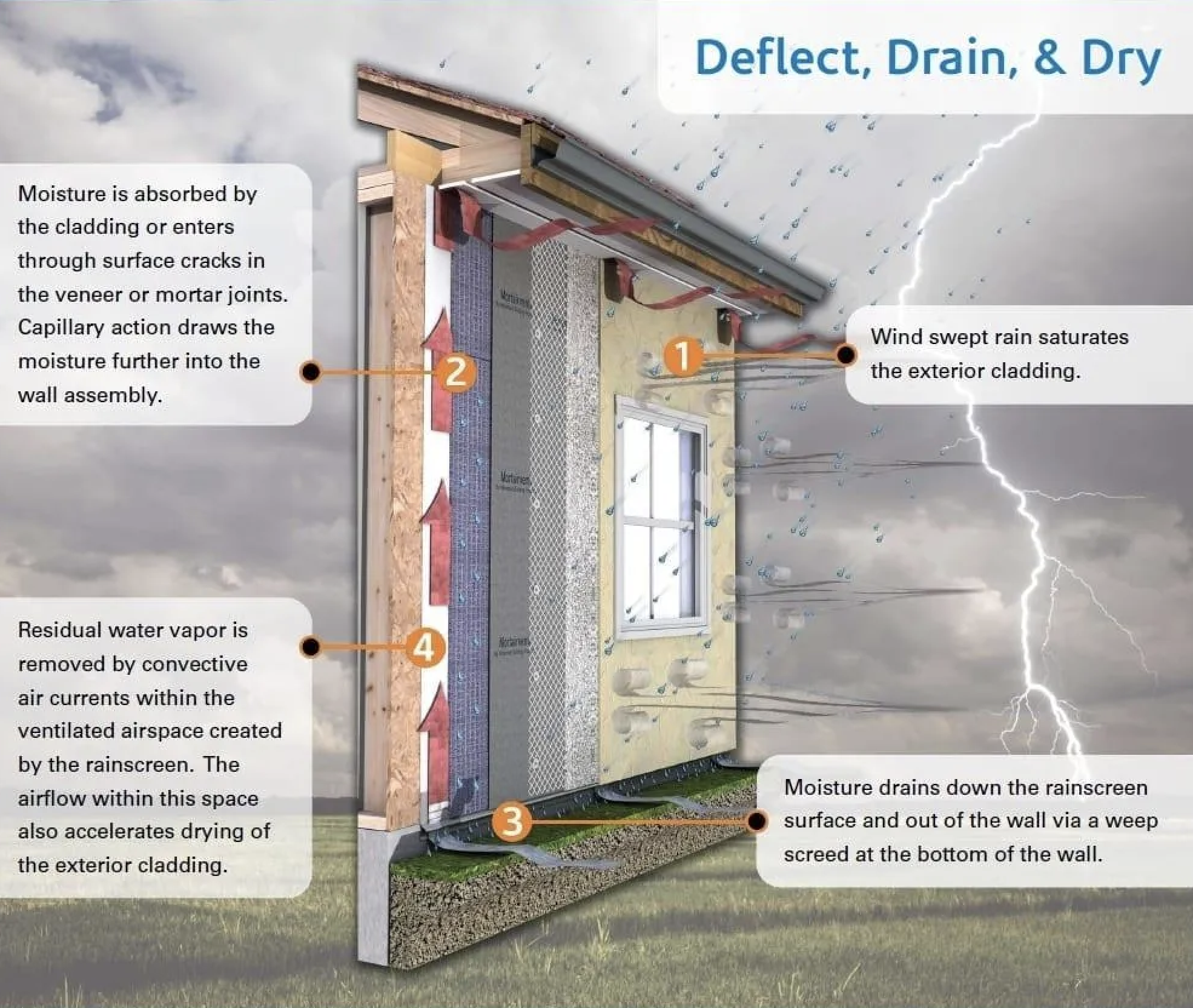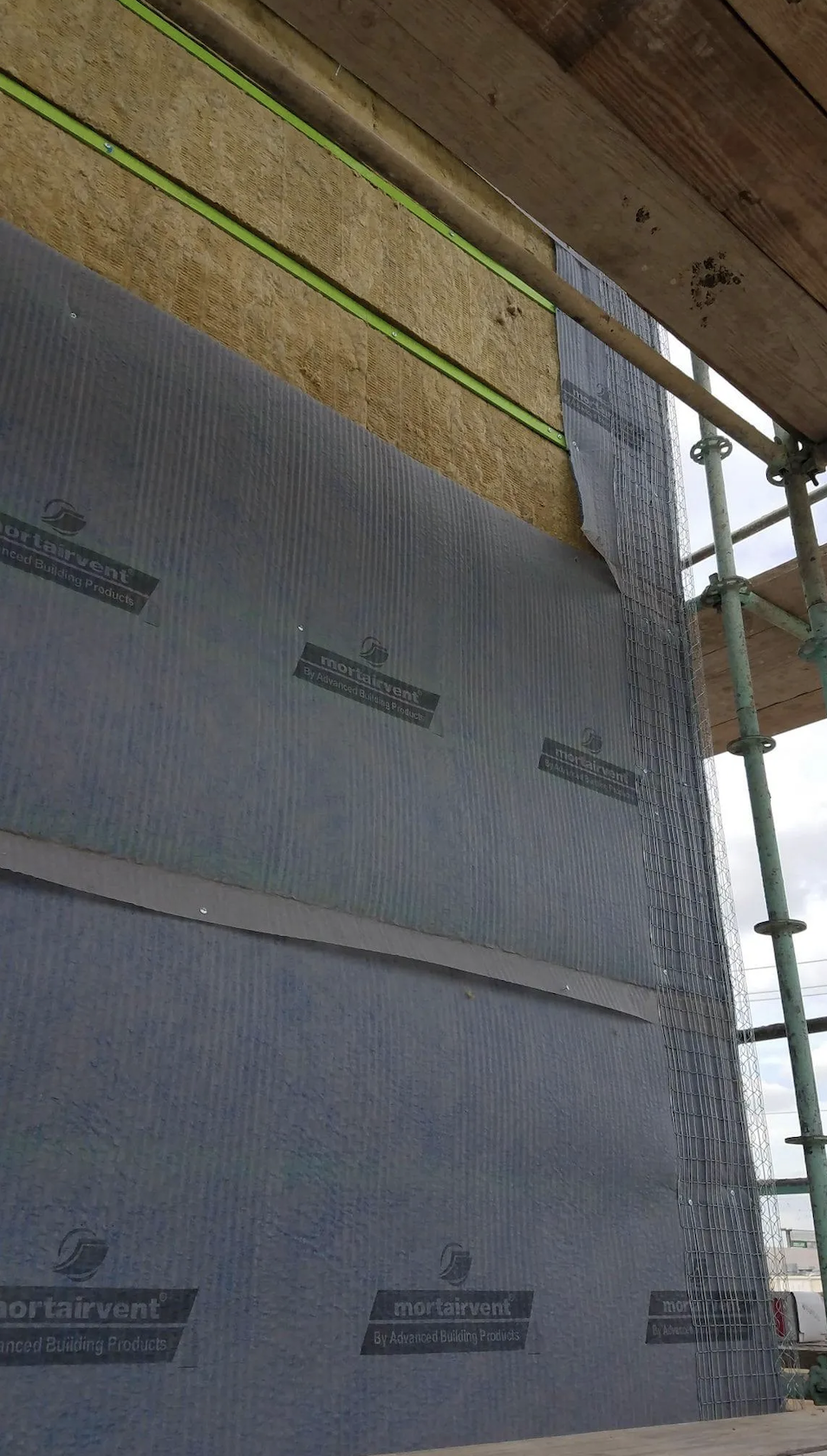Posted by Spycor Building on Mar 17th 2025
Rainscreen cladding is an exterior wall system designed to protect buildings from moisture while enhancing thermal efficiency and aesthetic appeal. By creating a ventilated space between the cladding material and the building's structural wall, this system effectively manages moisture and contributes to the overall durability of the structure. Rainscreen cladding also helps prevent water infiltration, reducing the risk of mold, mildew, and structural damage. Additionally, it enhances energy efficiency by improving insulation and regulating temperature fluctuations, making it a sustainable and cost-effective solution for modern construction. With a wide range of materials and design options available, rainscreen cladding offers architects and builders flexibility in achieving both functional and aesthetic goals for various building types.

Key Components of a Rainscreen System
-
Exterior Cladding: The outermost protective layer of a rainscreen system, designed to deflect the majority of rainwater while shielding the building from harsh environmental factors such as UV radiation, wind, and temperature fluctuations. High-quality cladding materials, including fiber cement, metal panels, and composite boards, improve durability and enhance the building's aesthetic appeal.
-
Ventilated Air Cavity: A crucial gap between the cladding and the structural wall that promotes continuous airflow, preventing moisture buildup and condensation. This cavity facilitates rapid drying, reducing the risk of mold, mildew, and structural deterioration caused by trapped moisture. Proper ventilation in rainscreen cladding systems ensures long-term performance and minimizes maintenance costs.
-
Insulation Layer: Positioned behind the air cavity, the insulation layer improves the building's thermal and acoustic performance. By reducing heat transfer, it enhances energy efficiency, lowers heating and cooling costs, and contributes to a comfortable indoor environment. Insulation materials such as mineral wool, rigid foam, or PIR panels are commonly used in high-performance rainscreen cladding systems.
-
Support Structure: The framework that secures the cladding panels to the building’s facade, providing structural integrity and ensuring the necessary spacing for ventilation. This system, often made of aluminum or galvanized steel, must be properly designed to withstand wind loads, thermal expansion, and movement while maintaining the effectiveness of the rainscreen system.

Advantages of Rainscreen Cladding
-
Moisture Management: Rainscreen cladding systems are designed to effectively manage moisture by creating a ventilated gap between the cladding and the building’s structural wall. This airflow prevents moisture accumulation, reducing the risk of mold growth, wood rot, and structural deterioration. By keeping the wall assembly dry, rainscreen systems enhance the building’s longevity and minimize costly repairs caused by water damage.
-
Enhanced Durability: By acting as a protective barrier, rainscreen cladding shields the building’s façade from harsh environmental conditions, including rain, wind, UV exposure, and temperature fluctuations. This added protection helps prevent material degradation, such as cracking, warping, or fading, significantly extending the lifespan of the structure. High-quality rainscreen systems require minimal maintenance, making them a long-term, cost-effective investment for commercial and residential buildings.
-
Energy Efficiency: The incorporation of an insulation layer within the rainscreen system improves the building’s thermal performance, reducing heat loss in winter and heat gain in summer. This enhanced energy efficiency leads to lower heating and cooling costs, contributing to a more sustainable and environmentally friendly structure. Properly installed rainscreen cladding can help buildings meet modern energy efficiency standards and improve indoor comfort.
-
Aesthetic Versatility: Rainscreen cladding offers a wide range of design possibilities, allowing architects and builders to customize a building’s exterior with various materials, textures, colors, and finishes. From natural wood and stone to metal panels and fiber cement boards, rainscreen systems provide flexibility in achieving modern, traditional, or industrial aesthetics. This versatility enables buildings to stand out while maintaining functional performance.

Installing a rainscreen system is straightforward and minimally disruptive, making it suitable for both new constructions and renovations. The process involves attaching the cladding to a support structure, creating the necessary air cavity for ventilation.
Rainscreen cladding systems offer a practical solution for protecting buildings from moisture while enhancing energy efficiency and aesthetic appeal. By understanding their components and benefits, home builders and DIY enthusiasts can make informed decisions for their building projects.
CLICK HERE to explore our range of high-quality rainscreen products to find the best solution for your building needs.


